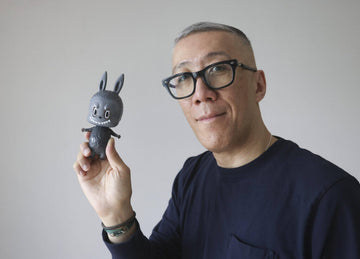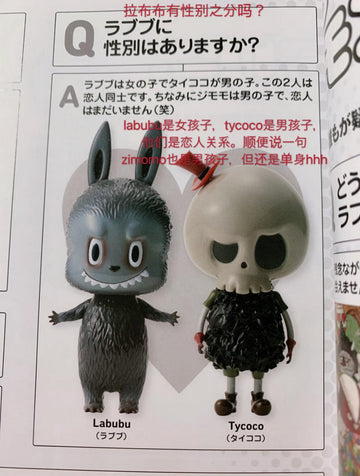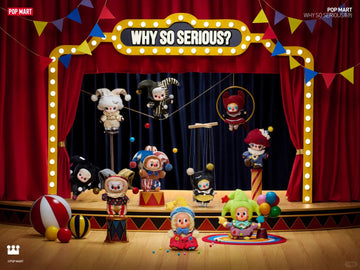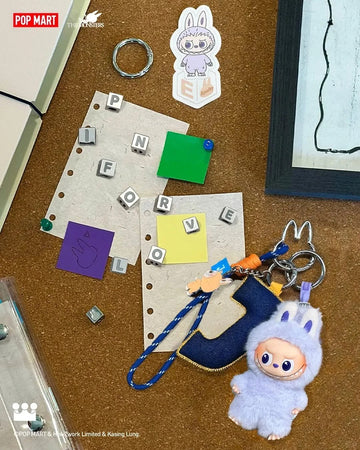The world has gone crazy for LABUBU, and it's easy to see why. These mischievous, toothy-grinned elves from "The Monsters" series have captured hearts everywhere, thanks in no small part to their creator Kasing Lung and a massive popularity boost from celebrities like BLACKPINK's Lisa.

But with great popularity comes a great problem: counterfeiters. The market is now flooded with fake LABUBU dolls, from cheap knock-offs to shockingly convincing "super fakes." Spending your hard-earned money on a fake is a heartbreaking experience.
Fear not. This is the most detailed, comprehensive guide you will find online to differentiate a real POP MART LABUBU from a fake. We've combined tips from multiple sources to create one ultimate checklist.

1. A Quick Backstory: Who is LABUBU?
Before we become counterfeit detectives, let's appreciate the art.
- The Creator, Kasing Lung: LABUBU is the creation of Hong Kong-born, Belgian-based artist Kasing Lung. Influenced by Nordic fairy tales, he created a whimsical world of elves and monsters. LABUBU, with its long ears and a full set of teeth, is the star. Despite their sometimes fierce look, most LABUBUs are actually girls!

Kasing Lung @ prestigeonline
- The Company, POP MART: Founded in 2010, POP MART is the global powerhouse that brought Kasing Lung's creations to the masses. They are an "art toy" company that collaborates with artists to produce highly collectible figures, most famously in a "blind box" format.

POP MART LOGO @ POP MART
2. LABUBU vs. ZIMOMO: What's the Difference?
A common point of confusion for new fans is the difference between LABUBU and the very similar-looking ZIMOMO. They are both part of the same "The Monsters" family, but here’s how to tell them apart:
| Feature | LABUBU | ZIMOMO |
|---|---|---|
| Role | A species of elf-like monsters. There are many of them. | The unique, one-of-a-kind leader of the LABUBU tribe. |
| Size | Standard size. | The largest in the group. |
| Tail | No tail. | Has a distinct tail. |
| Disguise | Sometimes, a LABUBU will wear a costume with a tail to imitate ZIMOMO. If you see a seam where the tail attaches to the body, it's a LABUBU in disguise! | The tail is an integral part of its body. |

3. The Ultimate Authentication Checklist: 12 Ways to Spot a Fake
Get your LABUBU ready. We're going in-depth.
Part A: Examining the Packaging
The fakers often fail on the details of the packaging.
1. Box Opening Mechanism:
- Real: The blind box is sealed with a one-time, destructive tear strip. Once you open it, you can't reseal it perfectly.
- Fake: Often uses a simple tuck-in flap that can be opened and closed without any damage.

2. Printing Quality:
- Real: The box printing is sharp, vibrant, and often uses reflective or holographic techniques. On LABUBU boxes, the fur texture in the illustration is crisp and detailed.
- Fake: Printing is often blurry, dull, or has washed-out colors.

3. The Anti-Counterfeit Label (Laser Sticker):
- Real: A high-quality laser sticker is present. When you tilt it, you should see a clear, shimmering double "P" logo for POP MART. Newer versions have a scratch-off area with a QR code.
- Fake: May have no sticker at all. High-quality fakes might have a sticker, but the "PP" shimmer is weak or non-existent.

4. Inner Bag Details:
- Real: The figure is sealed in a plastic or foil bag. This bag has clear, machine-sealed edges and small, circular air holes (for breathability). If you flip the bag inside out, you'll often find a mirrored version of the logo printed on the inside.
- Fake: The bag often has messy, crude seals and no air holes. The inner mirrored logo is almost always missing.

5. Desiccant Packet:
- Real: If a desiccant (silica gel) packet is included, it will be branded with the official POP MART logo.
- Fake: Uses a generic, unbranded desiccant packet.
Part B: Inspecting the Figure
Now for the doll itself.
6. Fur & Hairline Quality (for Plushies):
- Real: The fur is smooth, evenly distributed, and has a healthy sheen. The hairline is clean and full.
- Fake: The fur is often messy, matted, and sparse. Look for "bald spots" or a receding hairline, especially around the face. The color might look dull or faded.

7. Color & Proportions:
- Real: The colors of the head, hands, and feet are consistent and uniform. The head-to-body proportion is balanced and matches official photos.
- Fake: Colors can be mismatched between body parts. A common flaw is an oversized head that makes the figure look disproportionate.
8. The Foot Logo:
- Real: The left foot has a clearly printed, crisp logo. It should be two lines: the "POP MART" brand name and the "@Kasing" artist credit.
- Fake: The logo might be blurry, smudged, missing entirely, or only have one line of text (e.g., just "POP MART").

9. Bottom Steel Stamp (for Vinyl Figures):
- Real: On non-plush figures, the steel stamp on the bottom is clean, deep, and precisely engraved.
- Fake: The engraving is often shallow, rough around the edges, and the text can be crooked.
10. Wash Tag (for Plushies):
- Real: The text on the wash tag is printed in a deep, dark black and is perfectly legible.
- Fake: The printing on the tag is often a faded gray and can be difficult to read.

11. The UV Light Test (Advanced Trick):
- Real: This is a fantastic pro tip. Shine a UV (ultraviolet/blacklight) on the figure. On an authentic LABUBU, the eyes and the bottom of the right foot will glow. The right foot will often reveal a hidden, clear pattern of the doll's face.
- Fake: Will not have any reaction under UV light.

Part C: The Final Digital Verification (The Most Important Step!)
This is the ultimate test, designed to defeat even the most advanced fakes.
12. The QR Code "First Scan" Rule:
Some counterfeiters have become so sophisticated they copy REAL anti-counterfeit QR codes from real boxes and put them on fakes. Here’s how you beat them:
- Scan the QR code from the laser sticker on your box.
- Check the URL: It MUST lead you to the official POP MART verification site: fwsy.popmart.com. Any other URL is a fake site.
- The "First Scan" Check: The official site will tell you if this is the first time the code has been scanned. If the system says "This code has been queried before," you have a major red flag. It means your code was likely copied from another authentic box and you are holding a fake.

4. Frequently Asked Questions (FAQ)
Q: Is LABUBU a rabbit?
A: No! Despite the long ears, LABUBU is officially an elf or a monster from a fairy tale world.

Q: My LABUBU packaging has Simplified Chinese on it. Is it fake?
A: Not necessarily. POP MART is a Chinese company, and Kasing Lung has an exclusive licensing agreement with them. It is completely normal for authentic products sold globally to have Simplified Chinese on the packaging and tags.
Q: What does "Motherland Version" (祖国版) mean?
A: This is a common online term, especially on marketplace sites, used as a euphemism for a high-quality counterfeit product made in mainland China. If you see this term, you are looking at a fake.

Q: Where is the safest place to buy LABUBU?
A: Always prioritize official channels: the POP MART website, official POP MART physical stores, and authorized, reputable retailers. Be extremely cautious on peer-to-peer marketplaces like eBay, Facebook Marketplace, or others, as they are hotbeds for fakes.
By following this guide, you are now equipped with the knowledge to protect yourself and ensure that the LABUBU you bring home is the real deal. Happy collecting
![[2025] The Ultimate Guide to Spotting Fake POP MART LABUBU: Real vs. Fake](http://ladolly.com/cdn/shop/articles/LABUBU_VS_LAFUFU.jpg?v=1751797636&width=360)



